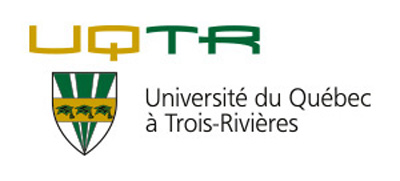Related projects
Discover more projects across a range of sectors and discipline — from AI to cleantech to social innovation.
Mitacs brings innovation to more people in more places across Canada and around the world.
Learn MoreWe work closely with businesses, researchers, and governments to create new pathways to innovation.
Learn MoreNo matter the size of your budget or scope of your research, Mitacs can help you turn ideas into impact.
Learn MoreThe Mitacs Entrepreneur Awards and the Mitacs Awards celebrate inspiring entrepreneurs and innovators who are galvanizing cutting-edge research across Canada.
Learn MoreDiscover the people, the ideas, the projects, and the partnerships that are making news, and creating meaningful impact across the Canadian innovation ecosystem.
Learn MoreBeta-lactoglobulin (?-LG) is a major whey protein found in the milk of many ruminant species. As a lipocalin, it is suspected to be involved in the transport of small hydrophobic molecules, and some evidence suggests that it can bind to vitamin A. ?-LG is an antigen in milk, causing allergic reactions in some individuals. This is due to the presence of several epitopes, or antigenic binding sites. Lantibiotics are antimicrobial peptides produced by Gram positive bacteria. Lantibiotics are generally regarded as safe for consumption by both humans and animals. Nisin is a Class A cationic lantibiotic that is produced by Lactococcus lactis. Nisin is typically used as a bio-preservative, especially in dairy products, and can either be applied as a purified lantibiotic to the food product, or can be produced by bacteria that have been added to the food product. Duramycin is a Class B neutral lantibiotic that is produced by Streptoverticillium cinnamoneus. Duramycin has the ability to treat bovine mastitis in the milk of cows. Mastitis is a disease that can cause abnormalities in the udder of cows such as swelling, heat, redness, hardness or pain if it is clinical. Other indications of mastitis can be seen in abnormalities in milk such as a watery appearance, flakes, or clots.
As both nisin and duramycin can be found in dairy products, and ?-LG is a major component of whey in dairy, it is possible for the molecules to naturally interact. An interaction between these molecules could reduce the ability of ?-LG to act as an allergen by the binding of one of the lantibiotics to a site close to one or more of the epitopes on ?-LG, interfering with the ability of an antibody to recognize and bind to the epitope, or by changing the structural conformation of the protein, therefore compromising the stability of the epitope. If the epitopes of the protein have been blocked or compromised, the ability of the protein to act as an allergen and trigger an immune response will have been reduced or prevented. This would mean that the presence of ?-LG in milk would no longer cause as strong of an allergic response, if any at all. An interaction between the ?-LGB with a lantibiotic could also increase the solubility of the lantibiotic, since such compounds are generally charged, and do not easily remain dissolved in a solution of higher lipid content, such as dairy products. This increased solubility would enhance the ability of the lantibiotic to act as an antimicrobial agent. As such, applications of an interaction between these molecules would be beneficial and it is important to study the potential interactions between them. This work will involve the application of Matrix-Assisted Laser Desorption Ionization-Time of Flight (MALDI-TOF) mass spectrometry to study the interaction of nisin and duramycin with ?-LGB. This work will evaluate the strength and type of the noncovalent interaction that may exist between the lantibiotics and ?-LGB.
Kingsley Donkor
HUMBERTO HERNANDEZ VALENCIA
Chemistry
Thompson Rivers University
Globalink
Discover more projects across a range of sectors and discipline — from AI to cleantech to social innovation.
Find the perfect opportunity to put your academic skills and knowledge into practice!
Find ProjectsThe strong support from governments across Canada, international partners, universities, colleges, companies, and community organizations has enabled Mitacs to focus on the core idea that talent and partnerships power innovation — and innovation creates a better future.













































































































































































































































































































